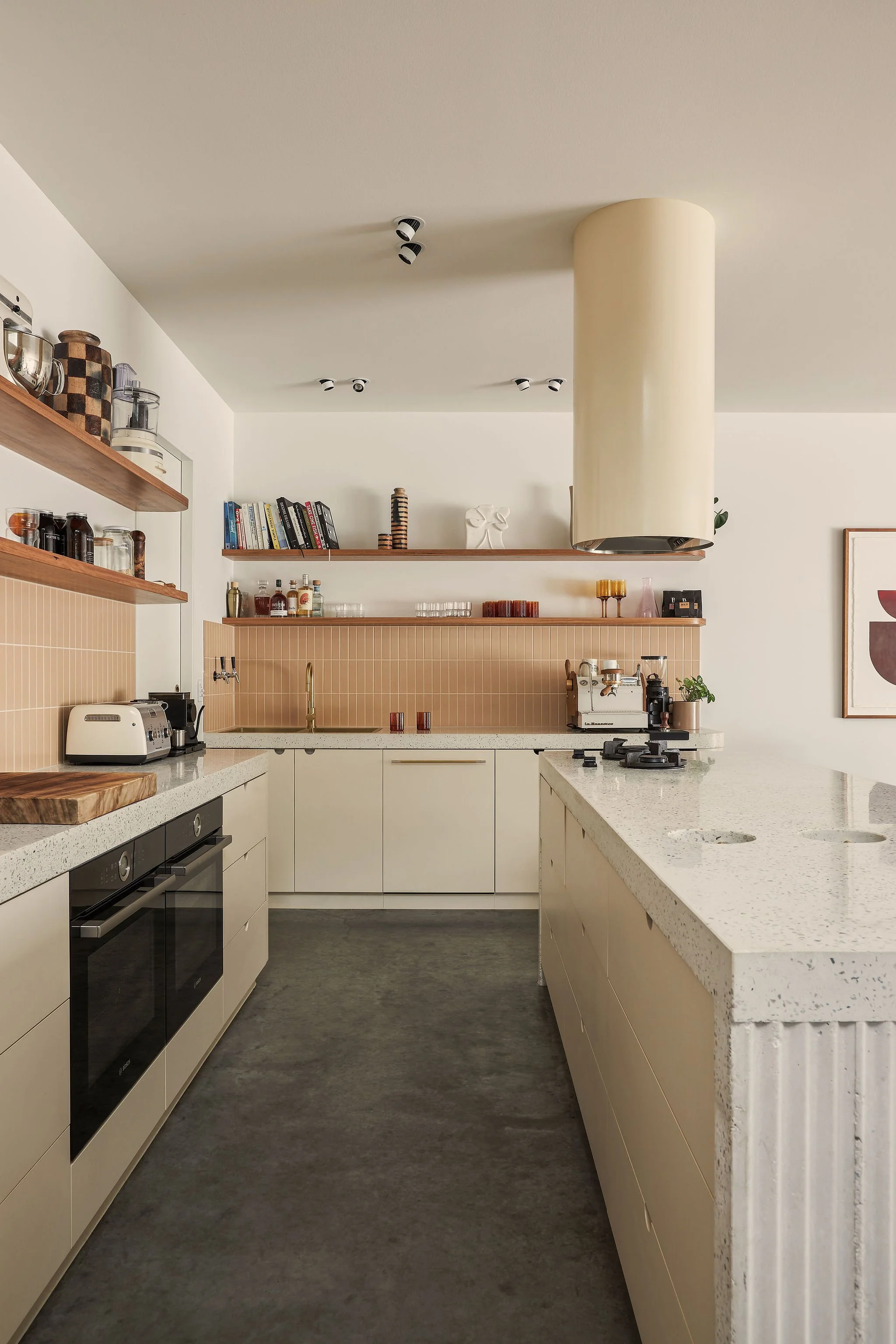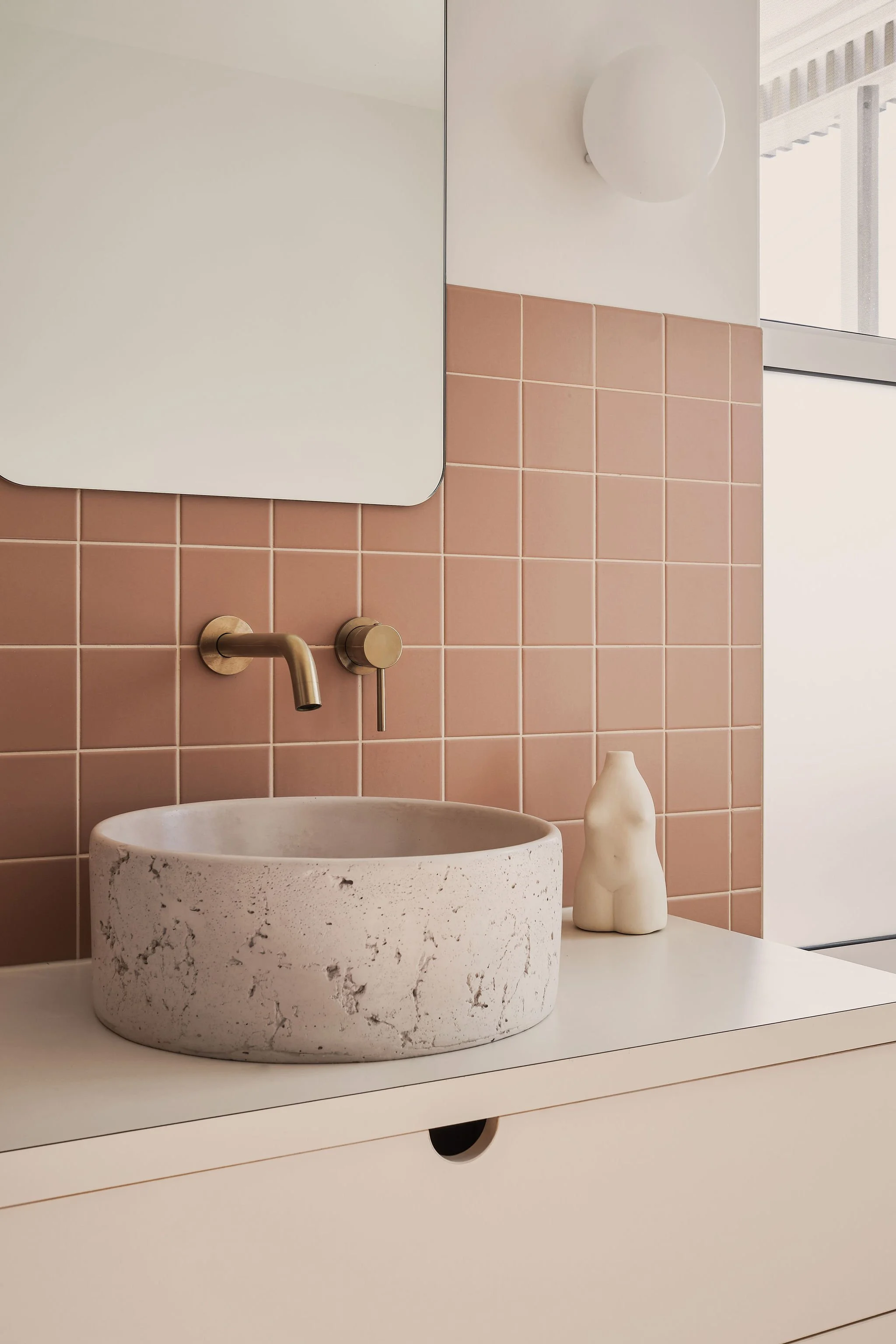Budget - it’s not a dirty word.
As a self-proclaimed champagne shopper on a beer budget, my default position is to listen to my inner-irresponsible-teenager and ignore discussions around budget like the plague. But alas, as a middle-aged mum and founder of an interior design studio, it’s a subject that I’ve inevitably become well-versed in, and somewhat ironically passionate about in the process.
Few of us are immune to the current cost of living crisis which has significantly impacted the housing industry and the way we approach a build or reno project - eating into savings and budgets that might have once been strategically set aside for home improvements.
The equity in your home might be substantial but you’re already feeling close to your limit on mortgage repayments. The price of materials and labour has skyrocketed, making each contractor’s quote as eye-watering as the next.
We are yet to meet someone who isn’t surprised at how far prices have increased since the start of the pandemic and whilst building or renovating a home has always indicated a level of privilege, the gap between those who can and those who cannot feels like it’s ever-widening.
So where does it leave you? Our core mission at Mosh Home is to help our clients love their home and so we’ll continue on our quest to find ways to make solid, impactful home improvements, for a range of budgets and social contexts.
To that end, we’ve compiled our first round of budget ‘best practice’ tips, which might help you start conversations, or at the very least, entertain thoughts around embarking on a home project. Let’s go.
Own your investment
It’s not the job of your designer or build team or relative or friend to tell you what you SHOULD spend on your renovation or build.
Sure, any one of the above can provide sound or unsolicited advice and anecdotes, but it’s ultimately up to you to find a figure you’re comfortable spending.
If you’re happy to stretch this, go for it. If you’re not, be aware that your expectations for what you want to achieve with this amount of money might not marry up with reality, but it’s worth finding this out earlier in the process, rather than spending thousands of dollars on designs you can’t afford.
Say it loud and proud
Budget, budget, budget! Get comfortable using the word budget, talking about your budget, checking in regularly for budget updates with your design and build teams and making sure you’re communicating and revaluating your investment at every opportunity.
Not only will you become more confident talking about money, you’ll also educate and empower yourself with construction knowledge. You’ll know where you stand - where to spend and where to pull back - so there are no ugly surprises at the end.
Trust
Don’t automatically assume your build team is ripping you off. At the end of the day, a contractor’s margins can only stretch so far to remain competitive (and a profit margin in construction is significantly different than what you pay in retail, for example).
However, if there are significant variations between pricing from one contractor to another, make sure you’re comparing ‘apples with apples’ by asking questions to get a fair and accurate perspective. Is the scope the same? Is the quality of work comparative? Have they allowed for the same materials? Do they understand the design parameters? Cross-check, do your homework and don’t be afraid to politely ask questions so you can approach each procurement decision fairly.
At the heart of it, we strongly recommend finding someone you genuinely like and trust and can be transparent with. Ultimately, a good build team will work with you to do some ‘value-engineering’ and get an outcome you’re happy with. After all, you’ll be needing to have honest and often uncomfortable conversations about your budget almost daily with this person, so you need to make sure you feel valued, understood and aligned.
Compromise
Who wants to compromise on a dream? No-one! But once you have your figure and an idea of what everything will cost, it’s vital you get real on what you absolutely must-have, and forgo the things you don’t need.
More often than not, price creep comes down to scope. To be sure, revisiting material selections is a great idea (we won’t recommend timber veneer or natural stone to a client on a humble budget), but scope is where you’ll find more substantial savings. Quite simply, a bigger floor plan will equate to a larger project cost. So cut those ‘sometimes used’ spaces and consider making things a little more compact to get more bang for your buck.
Plan, plan, plan
Play the long game. If you know you’ll be staying where you are long term and would like to renovate or build in 5 or even 10 years, there’s still a strong case to start the design conversation now.
Sure, your life stage and needs and wants will evolve in that time, but speaking to a design professional years before you start the project does have merit.
Firstly, you get to sit on those plans for a while, meaning you’ll have plenty of time to be absolutely sure the design is the right fit for your needs.
Often, the idea of what your home ‘could be’ is sometimes enough to get even the most frustrated of homeowners through the hard times in a house that doesn’t work. You’ll develop a clearly defined home goal, know what you’re working towards, and will be (somewhat) happy to wait knowing your dream home is in the pipeline.
Finally, it allows you to get an idea of cost (albeit in today’s dollars). Whilst this will likely change, a ballpark figure will give you something to work with and a foundation on which to make some key decisions.
For example, you might be thinking you'd like to do a knockdown and rebuild in 5 years, but when you talk to an architect or building designer, the numbers simply don’t stack up - whether you start today or in 10 years’ time.
Far better to have these conversations now, get prepared for what your project might look like or cost, talk to your financial team and review and refine plans as needed.
Call in the pro’s
Think you can’t afford to engage a designer? Perhaps you can’t afford not to.
We’ve heard from several friends - ‘I can’t afford a designer’. Still, they dive into a home project, spending tens of thousands of dollars without a clear plan in place and end up luke-warm about the result.
Honestly, we firmly believe this is where a designer is gold. Whether you have $30,000 or $3,000,000 to spend, every dollar still represents value and should be treated as such.
A good designer will keep your budget top of mind, know where to spend and save and ultimately make sure your investment is sound. Whilst a tighter budget might not allow for full-scale interior design services, many designers (like us!) will offer sessions specifically geared towards those who need some professional direction and guidance, rather than extensive technical plans.
We also believe that chatting to a designer about budget is one sure-fire way to ensure they’re the right team for you. Do they run a mile at the mention of the investment you have in mind, or do they remain engaged whilst providing honest, empathic feedback about what can be realistically achieved? That’s exactly what you should expect.
So what do I do next?
At Mosh Home, we’re always asking ourselves - what’s the next best or obvious step?
If you’re at the start of your journey, the solution might simply be starting conversations with a few chosen pros in the field. If they’re friendly and approachable (that’s us!), they’ll be happy to be given the opportunity to chat about the industry and educate you around the cost of their services and recent projects they’ve worked on.
Perhaps you might be comfortable to throw a few hypotheticals at them - ‘would it be possible to achieve Y if I had X to spend?’. If you like the conversation, you might want to take them up on an initial consultation to learn more about the possibilities and opportunities with your own home.
Sure, building or renovating a home looks vastly different than it did five years ago. But with some expert guidance, education and perspective, we firmly believe the majority of homeowners can still live their best home lives, regardless of the size of their wallet.







